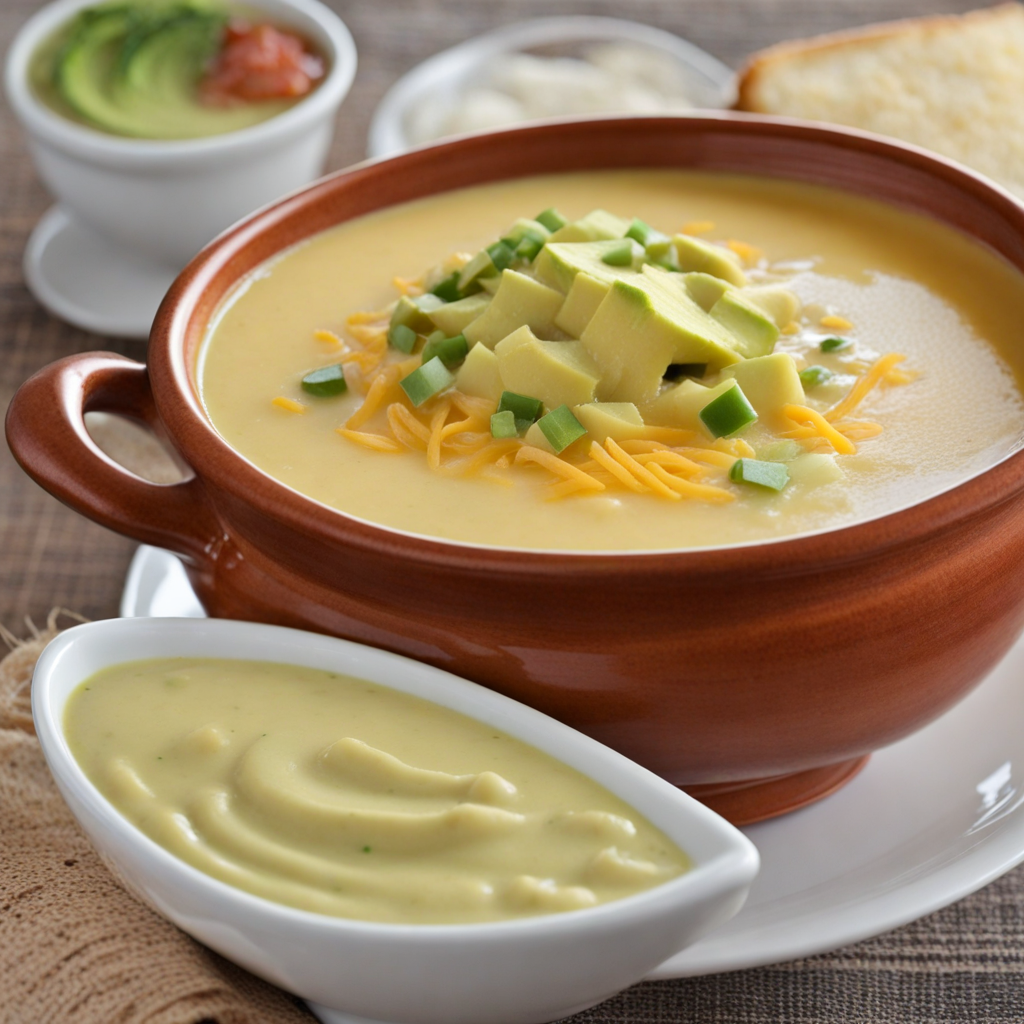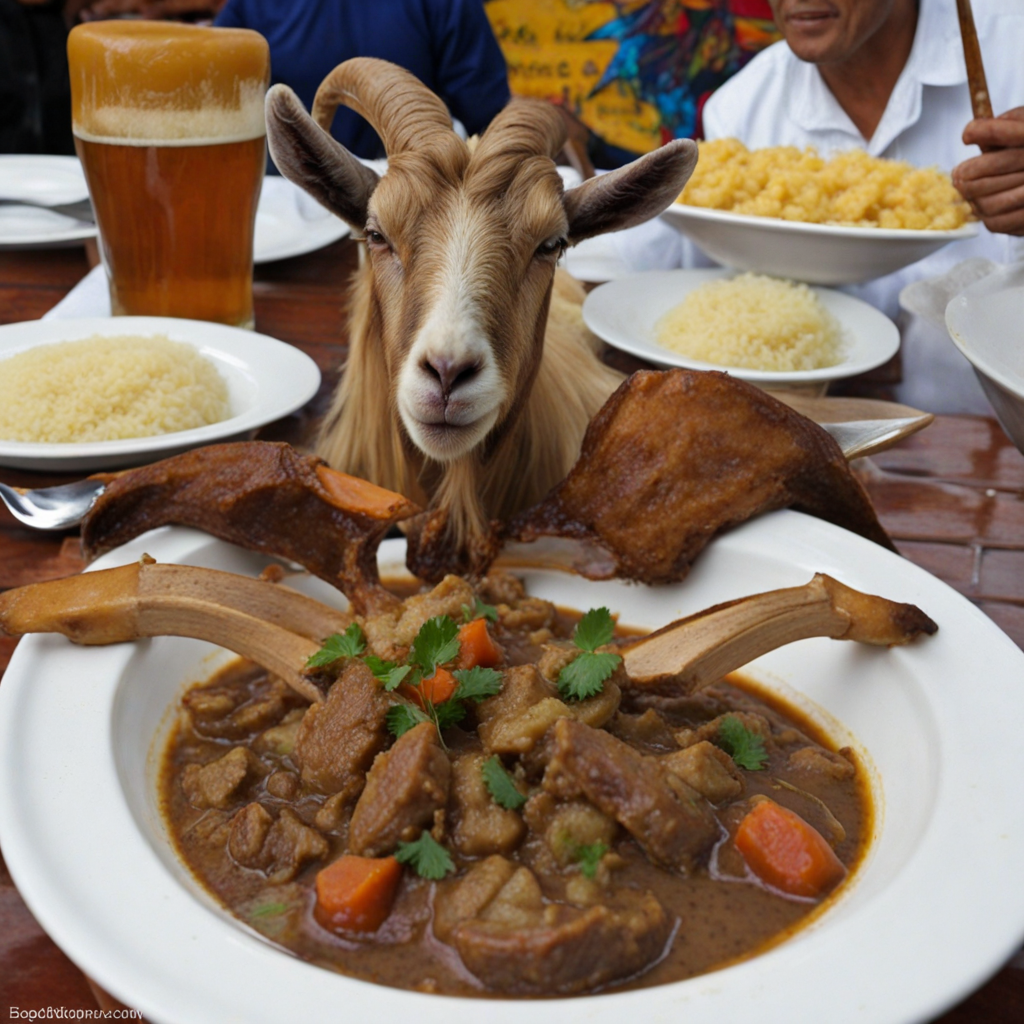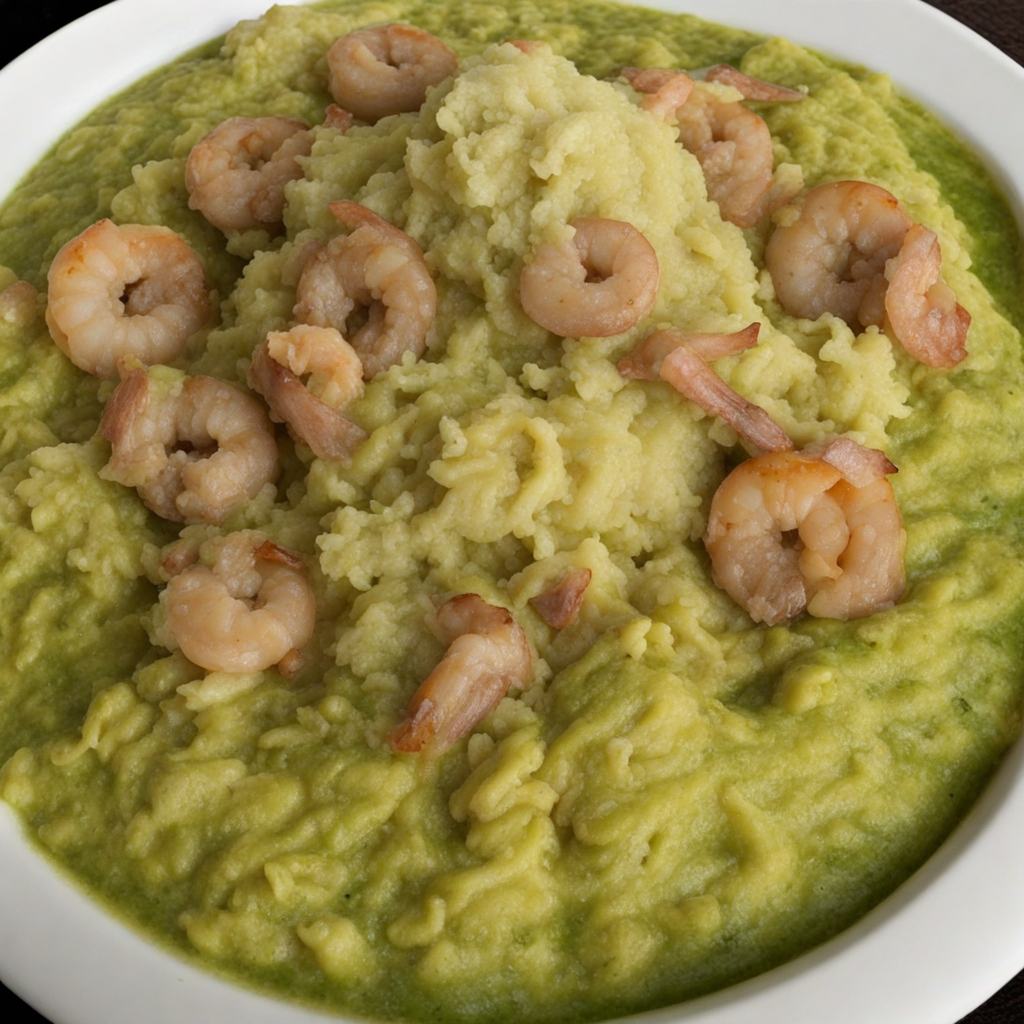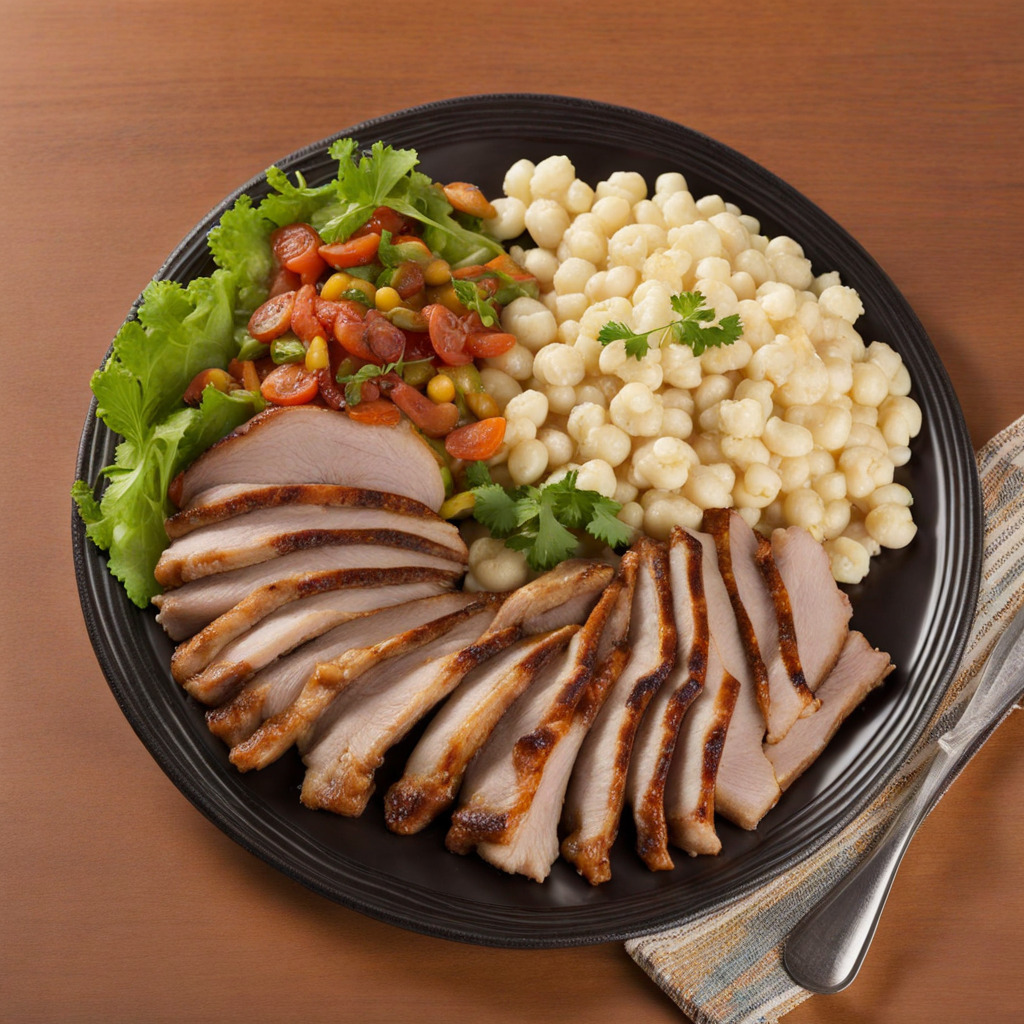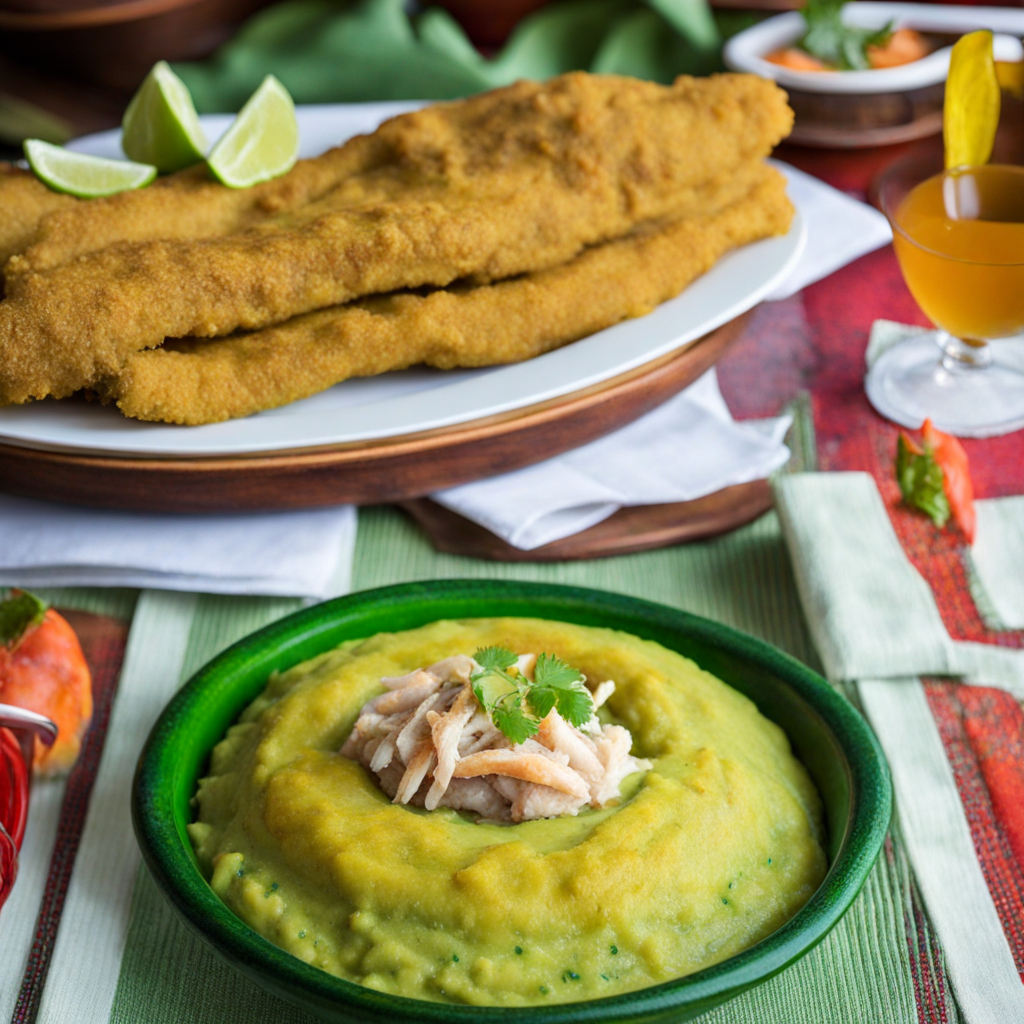Locro de Papas
Locro de Papas is a traditional Ecuadorian soup that beautifully embodies the rich agricultural heritage of the Andean region. This hearty dish is primarily made from potatoes, which are a staple in Ecuadorian cuisine. The potatoes are typically boiled and then mashed or puréed, creating a creamy texture that serves as the soup's base. The incorporation of different varieties of potatoes adds depth and complexity to the flavor, making each bowl unique. The addition of onions, garlic, and achiote provides a fragrant aroma and a subtle warmth, while fresh herbs like cilantro and parsley brighten the dish, enhancing its comforting qualities. What sets Locro de Papas apart is its luscious consistency and the way it encapsulates the essence of its ingredients. Often, it is garnished with ripe avocado slices, which lend a buttery richness, and crumbled cheese, commonly queso fresco, adding a delightful saltiness that contrasts beautifully with the smoothness of the soup. Some variations also include a dash of lime or a sprinkle of hot sauce, giving diners the option to personalize their experience with a zesty kick. The dish is typically served with a side of corn or toasted corn snacks, offering a satisfying crunch that complements the creamy soup. Locro de Papas is more than just a meal; it's a reflection of Ecuador's cultural identity and culinary traditions. Enjoyed across the country, especially in the highlands, this dish is often prepared during festivals and family gatherings, making it a symbol of warmth and togetherness. Each spoonful tells a story of the land, the ingredients, and the people who create it, inviting food lovers to explore the rich flavors of Ecuadorian cuisine. With its comforting nature and vibrant taste, Locro de Papas is a must-try for anyone looking to discover the diverse and delicious world of South American food.
How It Became This Dish
Locro de Papas: A Journey Through Ecuador's Culinary Heritage In the heart of the Andes, where the towering peaks of the Sierra rise dramatically against the sky, lies Ecuador—a country rich in culture, history, and biodiversity. Among its many culinary treasures, one dish stands out as a symbol of comfort and tradition: Locro de Papas. This hearty potato soup embodies the spirit of Ecuadorian cuisine, showcasing the country's indigenous roots, agricultural abundance, and evolving food culture. Origins of Locro de Papas Locro de Papas can trace its origins back to the indigenous peoples of the Andes, who have cultivated potatoes for thousands of years. Archaeological evidence suggests that potatoes were domesticated in the region around 7,000 to 10,000 years ago. The tuber became a staple food, integral to the diet of the Andean communities. The indigenous peoples developed a deep understanding of the various potato varieties, each adapted to specific altitudes and climates, which they utilized in an array of traditional dishes. The term "locro" itself is derived from the Quechua word "ruqru," meaning thick soup or stew. Traditionally, locros were made with local ingredients, including legumes, grains, and tubers, reflecting the agricultural practices of the time. As the Spanish colonizers arrived in the 16th century, they introduced new ingredients, such as cheese and meat, which transformed the original indigenous recipes. The fusion of these culinary traditions laid the groundwork for what we know today as Locro de Papas. Cultural Significance Locro de Papas is much more than just a dish; it represents the essence of Ecuadorian hospitality and community. It is typically enjoyed during family gatherings, celebrations, and festivals, serving as a comforting meal that warms both body and soul. The dish is especially popular in the highlands, where the cold climate makes a hearty soup particularly appealing. In Ecuador, food is often intertwined with cultural identity. Locro de Papas embodies the country’s agricultural heritage and the importance of potatoes in the Andean diet. The dish highlights the connection between people and land, as it relies heavily on locally sourced ingredients. Potatoes, avocados, cheese, and herbs are all cultivated in the fertile soils of the Andes, making Locro de Papas a celebration of the region's bounty. Moreover, the dish has become an emblem of national pride. It is commonly featured in Ecuadorian gastronomy, often served in restaurants that promote traditional Ecuadorian cuisine. The dish's inclusion in various culinary festivals further underscores its significance to the nation’s culinary identity. The Evolution of Locro de Papas As Ecuadorian society evolved, so did Locro de Papas. The basic recipe has remained consistent over the years, but regional variations have emerged, reflecting local tastes and available ingredients. The classic version includes potatoes, cheese, and avocado, often seasoned with cilantro and accompanied by aji (a spicy sauce). However, variations might include the addition of corn, meat, or different types of cheese, making each preparation unique. In the highland regions, particularly in cities like Quito and Cuenca, Locro de Papas is often enriched with a creaminess that comes from the addition of milk or cream. The soup is typically garnished with fresh avocado slices, which add a velvety texture and enhance the dish's richness. The use of different potato varieties also contributes to the flavor and texture, with some locals favoring yellow potatoes for their creaminess and others opting for white potatoes for a firmer bite. As globalization began to influence culinary practices in the late 20th and early 21st centuries, Locro de Papas found its way onto international menus, showcasing Ecuadorian cuisine to the world. Chefs began experimenting with the dish, incorporating modern techniques and presentations while still honoring its traditional roots. This blending of old and new culinary practices has made Locro de Papas a versatile dish that appeals to both local and international palates. A Culinary Revival In recent years, there has been a resurgence of interest in traditional Ecuadorian foods, driven by a broader movement towards sustainability and local sourcing. Chefs and home cooks alike have begun to embrace Locro de Papas not just as a nostalgic comfort food but as a dish that can reflect the values of modern cooking—seasonality, freshness, and a connection to local farmers. Food festivals celebrating Ecuadorian cuisine have also played a role in revitalizing interest in Locro de Papas. Events such as the "Festival del Locro" in Quito draw visitors from all over the country and beyond, eager to taste the many variations of this beloved soup. Culinary competitions challenge chefs to innovate while respecting the dish’s traditional essence, ensuring that Locro de Papas continues to evolve in exciting new directions. Moreover, the rise of social media has allowed home cooks to share their own takes on the recipe, fostering a sense of community and shared cultural heritage. From Instagram posts featuring beautifully plated bowls of Locro de Papas to YouTube tutorials on how to make the soup from scratch, the dish has found a new platform to thrive in today’s digital age. Conclusion Locro de Papas is more than just a dish; it is a cultural artifact that tells the story of Ecuadorian identity, resilience, and adaptability. Rooted in the ancient agricultural practices of the Andean peoples, it has evolved through centuries of cultural exchange and innovation. Today, Locro de Papas stands as a testament to the rich tapestry of Ecuadorian cuisine, celebrating the country's agricultural heritage while embracing modern culinary trends. As Ecuador continues to grow and change, Locro de Papas will undoubtedly remain a cherished part of its culinary landscape—an enduring symbol of comfort, community, and the deep connection between food and culture. Whether enjoyed on a chilly Andean evening or at a festive gathering, Locro de Papas invites everyone to share in its warmth and tradition, making it a beloved dish for generations to come.
You may like
Discover local flavors from Ecuador


